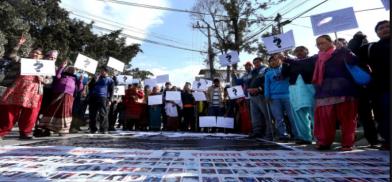Nepal to excavate sites in search of people gone missing during Maoist insurgency
Excavation will take place under the supervision of international forensic experts provided by the International Committee for the Red Cross

Nepal will dig up seven sites where victims of enforced disappearances during the country’s decade-long Maoist insurgency are suspected to be buried after being killed either by the state security forces or Maoist insurgents. The move came almost seven years after a commission identified 2484 cases of missing people.
Starting from 1996, when the Maoist rebels began their insurgency, thousands of people— both civilians and combatants—were killed and scores went missing till 2006 when parties signed the historic Comprehensive Peace Accord. However, 15 years on, relatives of victims still wait for transactional justice.
Excavation will take place under the supervision of international forensic experts provided by the International Committee for the Red Cross.
“The International Committee of the Red Cross has promised support. The commission is forging an agreement with the committee in a couple of weeks,” Gangadhar Adhikari, spokesperson of the commission, was quoted as saying by The Kathmandu Post.
Formed in 2015, the Commission of Investigation of Enforced Disappeared Person this week said they will excavate the seven of 60 reported possible sites where the missing people are supposedly buried. The whole exercise is expected to be completed by 15 July, when the term of the present commission will come to an end.
Of the 3223 reports that the commission had received of missing people, 2484 cases are found to be genuine by it. However, the Red Cross estimates over 1333 people are still missing.
The commission had excavated several individual graves. However, excavating the site where more than one body is buried is a complex process that could only be done under the supervision of international forensic experts.
Despite inflicting a tremendous human toll, Nepal’s decade-long Moist insurgency transformed the country's social-political landscape and played a crucial role in the democratization of the country, resulting in the end of the 265-year old Shah monarchy.
(SAM)








Post a Comment